SMILE laser eye surgery
SMILE Laser is an acronym for SMall Incision Lenticule Extraction, also referred to as “keyhole laser eye surgery” is a treatment approved for moderate to high levels of short-sightedness (myopia) principally.
It is not currently approved to treat long-sightedness, and its treatment of astigmatism is often less effective than other treatments.
SMILE uses a femtosecond laser to cut a double layer of corneal tissue beneath the surface as a sliver of tissue, a lenticule, which is then removed manually with a surgical instrument, from within the cornea, through a surface cut.
What is a femtosecond laser?
A Femto-Second (FS) laser is an infrared laser with a wavelength of 1040nm giving a laser pulse of a few femtoseconds duration. A femtosecond is one quadrillionth of a second (10-15 second).
This laser works by producing photo-disruption or photo-ionization of biological tissue.
Application of a FS laser pulse results in the generation of a rapidly expanding cloud of free electrons and ionized molecules (a gas bubble) and this results in disruption of the treated tissue.
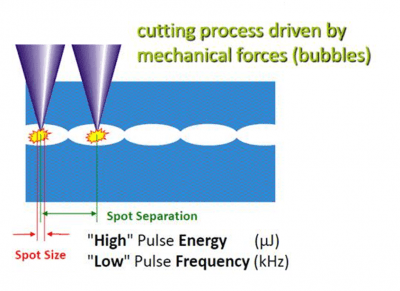
The ultrashort laser pulse duration of around 100/1,000,000,000,000,000th second, reduces the amount of energy required and limits adjacent tissue damage. This makes FS laser safe for use in corneal surgeries which require exquisite precision.
The laser places pulses side by side in a plane of dissection that links the bubbles to produce a gap in the tissue, a cleavage plane, like a computer controlled knife.
The technology of FS laser has evolved significantly from its introduction. Laser firing frequency has increased from 10 kHz (10,000 pulses per second) in 2002 to 500kHz (500,000 pulses per second) in 2018. Even faster femtosecond lasers running at many times this speed, but with much lower energies, are also in development.
What is SMILE Laser?
SMILE uses a femtosecond laser to cut a double layer of corneal tissue beneath the surface as a sliver of tissue, a lenticule, which is then removed manually with a surgical instrument, from within the cornea, through a surface cut.
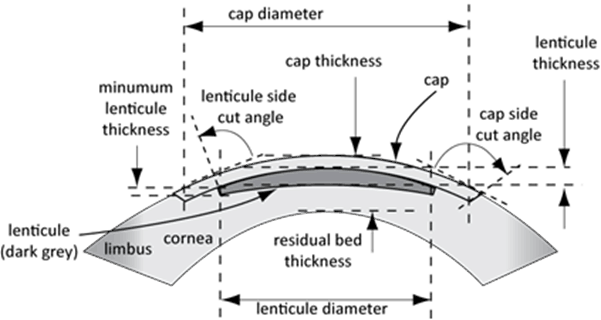
To do this, a curved suction cup is placed on the eye surface, and multiple laser cuts are made, taking around 25 – 30 seconds. There is a minimum thickness that is required at the lenticule edge, and the lenticule must be placed at a certain depth beneath the surface “cap” so it doesn’t tear with the manual manipulation. Typically, this depth is set at 130 micron for the cap plus the edge thickness plus the refractive correction, so the residual (remaining) tissue thickness can be less than with other techniques.
How is this any different to other laser treatments?
With PRK, an Excimer laser vapourizes the surface of the cornea directly and is then allowed to heal over several days. This is a tried and proven technique but is slow to heal (several days or weeks, with discomfort and blur) and can scar if too much tissue is removed.
With LASIK a single layer is produced by the femtosecond laser around 95 microns deep. The surface layer is lifted out of position and then an Excimer laser smooths the underlying surface with vaporization of the exposed area with a precise volume and shape for your refractive correction. The flap is then repositioned to mold to the new shape. Healing is rapid (hours) and vision clarity is almost immediate. Scarring is rare.
What are the advantages of SMILE
There are many claims of superiority of the SMILE procedure over other laser procedures:
- The surgery is quick, 25 seconds of painless laser –
- All laser procedures are quick, and painless with the use of topical local anaesthetic eye drops.
- The whole procedure takes around 5-10 minutes per eye.
- SMILE has been performed commercially since 2012 and locally in WA since 2015.
- At Perth Laser Vision we have been performing laser eye surgery for over twenty years, always with the most up to date laser technology.
- Dr Phillip McGeorge is Perth’s most experienced refractive surgeon with over 35,000 procedures including SMILE, LASIK and PRK.
- A better treatment experience –
- There is more to the treatment experience than just the laser which takes only seconds in both SMILE, LASIK and PRK.
- Modern ergonomic lasers with motorised operating table movement is standard.
- There is no burning of corneal tissue by an Excimer laser or Femtosecond laser.
- All lasers cause photodisruption of biological tissue. The chemical bonds are disrupted producing a vapour. In a Femtosecond laser this produces a bubble within the cornea, in an Excimer laser the gas bubble is not confined (plume).
- All modern Excimer lasers are equipped with plume extractors for any corneal tissue vaporized by the process and treatment lasts seconds only, in any case.
- Quick recovery –
- A recent study from the Singapore National Eye Centre showed that it took six months for the average vision of a SMILE patient group to be as good as their LASIK patient group.
- The visual acuities remain lower with SMILE on average than with LASIK. Less people achieve normal 20/20 vison (6/6) with SMILE (around 80%), hence the high retreatment rate of 8%. Re-treatment involves either PRK or LASIK.
- After SMILE most people complain vision is cloudy, and this may take several months to resolve. This is due to haziness of the residual stromal bed surface, best seen with the red-reflex through a slit lamp biomicroscope.
- There is minimal discomfort following all laser treatments until the local anaesthetic wears off. Panadol and/or Nurofen are effective. Most people go home to bed and have a sleep with both procedures.
- A cut on the eye is a cut on the eye regardless of size. LASIK surgery does give a variable degree of stinging, watery irritation typically for up to 5-6 hours, SMILE discomfort is similar and also lasts 5-6 hours following surgery.
- More accurate –
- A review of the peer-reviewed medical literature on SMILE fails to find visual results that come close to the positive results of customised LASIK, which uses Wavefront-Guided or Topographic-Guided (Contoura® Vision) treatments.
- Centration of treatments with SMILE cannot be adjusted – treatments are centered on where the suction ring sits.
- The suction is less than with other femtosecond lasers although discomfort is minimal with LASIK or SMILE.
- Excimer lasers have active eye tracking to adjust each laser pulse position, relative to the pupil centre, before the laser shot is made. Femtosecond lasers rely on suction holding the eye perfectly still.
- More stable –
- For a treatment that has been performed in WA since 2015, long-term stability has not been established.
- Clinical trials for results more than 1 year after SMILE have not been published.
- Corneal ectasia – a rare, progressive corneal thinning has been described after SMILE, LASIK and PRK. The relative merits of which is better has not been established. Most cases occur with predisposed individuals, high myopia, or thin corneas and are due to persistent eye rubbing.
- Less dry eyes –
- The U.S. FDA approved SMILE in September, 2016. The FDA press release said, “Common complications after [SMILE] surgery included debris at the site of tissue removal, dry eye, …”
- Better night vision –
- The US FDA FDA press release said, “Common complications after [SMILE] surgery included … moderate to severe glare and moderate to severe halos.” This is largely a function of pupil size in dim light.
- Claims of “better” night vision are subjective and comparisons of different laser systems are difficult to substantiate.
- The size of the optic correction zone on the cornea depends on the amount of tissue removed. SMILE typically removes more tissue than LASIK which leaves less residual stroma. Typically the maximum that is removed is the amount required to perform the task, and this is minimized, since removing more than is needed is superfluous and may be dangerous.
- Clarity of the cornea is NOT better than LASIK. The deeper the tissue removal the rougher the residual stromal bed becomes. This is due to deeper layers being packed less tightly with connective tissue than in superficial layers. Lasering the superficial layers is inherently smoother. SMILE works beneath the superficial layers.
- No Flap –
- There is no flap with PRK or lens implants.
- If you need adjustment or fine-tuning after SMILE, a LASIK flap must be cut or PRK performed.
- Retreatment rates for SMILE are around 8%.
- The SMILE incision is set at 130 – 140 microns, deeper than with LASIK at 95 – 100 microns, and PRK is on the surface (epithelial depth 50-60 microns) and PRK also has no flap.
- There is no evidence that the SMILE corneal surface is smoother than other treatments, particularly since both LASIK and SMILE are performed beneath the surface.
- “Mud-crack” folds in the superficial cornea can occur in SMILE because the superficial layer is larger than the deep surface, is stretched by manipulation beneath and doesn’t sit back neatly in place. In LASIK the superficial flap is smoothed out with the edges of the flap able to move if needed.
- The amount of tissue removed in SMILE is greater than with LASIK or PRK for all lower levels of myopia.
- Enhancement surgery may not be possible after SMILE.
- Corneal nerves are preserved –
- Corneal nerves run in the deeper cornea at around 300 microns depth (below both SMILE and LASIK) before turning to the surface. The nerves are visible with slit lamp biomicroscopic examination.
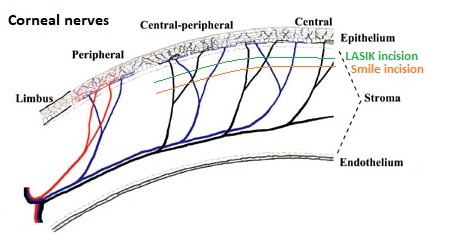
- The SMILE incision across the cornea has a large diameter and does cut some superficial nerves.
- The SMILE incision is placed deeper than the cut flap of LASIK and the amount of tissue removed is greater due to the lenticule edge thickness, especially for mild to moderate myopia.
- Nerve regrowth occurs within days of treatment, in any case.
- Minor tenderness of the eyes with eye rubbing lasts one to two weeks in both SMILE and LASIK. Rubbing a fresh cut is not recommended in either procedure.
- The cornea is stronger after SMILE –
- A recent study of the tensile strength of the cornea showed the cornea that has SMILE is actually weaker than the cornea that has LASIK, especially for moderate myopia. For high myopia both SMILE and LASIK were similar.
- The thin superficial cornea adds very little to the much thicker, deeper layers. The superficial and the deep layers are made of exactly the same material.
- The residual corneal stroma beneath the treated cornea determines the strength of the cornea and its ability to maintain the new corneal shape.
- A minimum thickness of 250 micron is accepted as safe, but the thinner the superficial layer above the treatment, the thicker the residual bed thickness will be.
- LASIK uses a thinner superficial layer than SMILE and necessarily must leave a thicker residual bed for the same focus correction.
- PRK is performed on the surface and has the thickest residual but may scar with high ablations and takes longer to heal than LASIK or SMILE.
- For those where the corneal strength is questionable, the additional treatment of corneal cross-linking can be undertaken either during the laser procedure (LASIK Xtra – a 3 minute additional treatment) or performed at a later date.
At Perth Laser Vision, we provide a full range of refractive procedures for all eyes, rather than just one or two. Our primary focus over the last 20 years, has been to achieve the best possible visual outcome for patients.
What is the truth about SMILE?
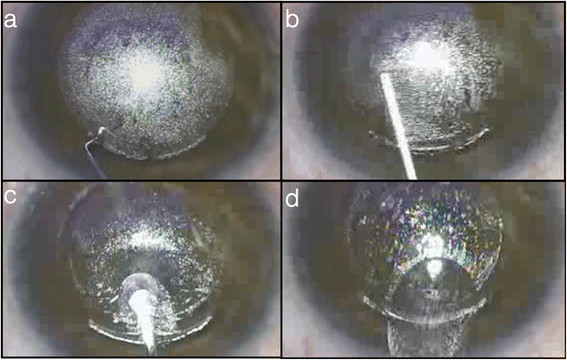
Customisation and visual quality
SMILE Laser is a treatment for moderate and high levels of short-sightedness (myopia) only. For lower levels of short sightedness SMILE removes more tissue than PRK or LASIK.
It is not currently able to treat long-sightedness or low levels of short-sightedness, and its treatment of astigmatism is less effective than other treatments.
SMILE can only do a standard treatment; basically, what is available in stock contact lenses. It cannot do customised treatments, as we do at Perth Laser Vision, to get the best personalized results.
Recovery rate
Visual recovery is slower than with LASIK but faster than PRK. The principal reasons for this are the roughness and irregularity of the treated surface, microfolds in the surface cornea, non-aspheric laser treatment, stretching of the superficial layer of cornea, residual tissue from incomplete removal, and dry eyes.
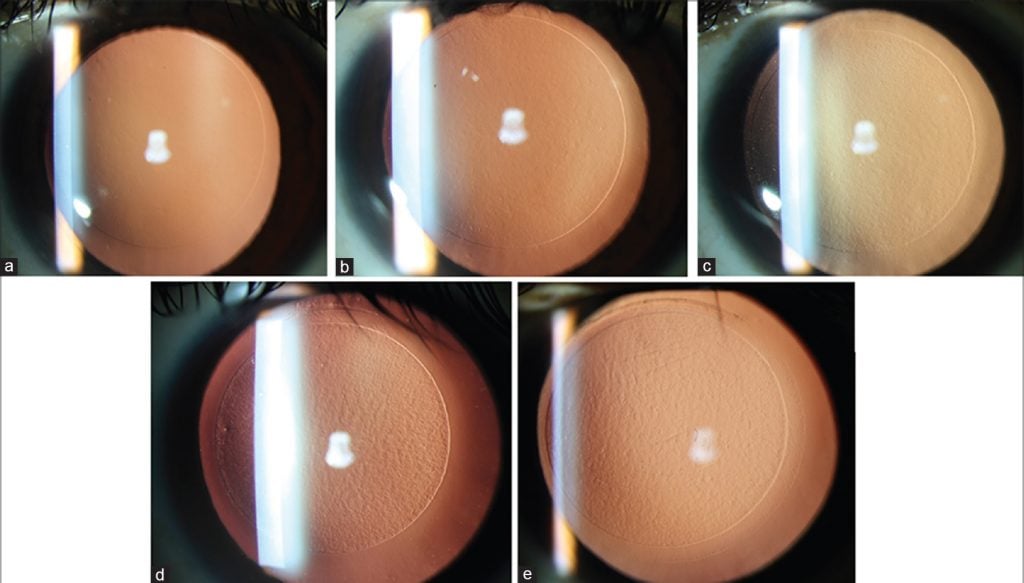
Variable quality of clarity seen through the slit lamp biomicroscope after SMILE, note the rough surface and sharp edge of the lenticule extraction.
Complications
One of the most serious complications of any eye surgery is a rare complication called ectasia. In ectasia there is a weakening and stretching in the cornea, sometimes over years, which results in poorer vision. The principal cause is chronic, persistent eye rubbing after laser eye surgery.
One of the claimed advantages of SMILE is that it leaves a stronger cornea. This claim has not been proven.
Conclusion
Perceptions of SMILE being less invasive and have better safety are not supported.
The main disadvantages of SMILE are:
- lack of individual customization
- slow recovery of vision
- slightly lower chance of achieving 20/20 vision
The SMILE procedure is available at Perth Laser Vision for suitable candidates.